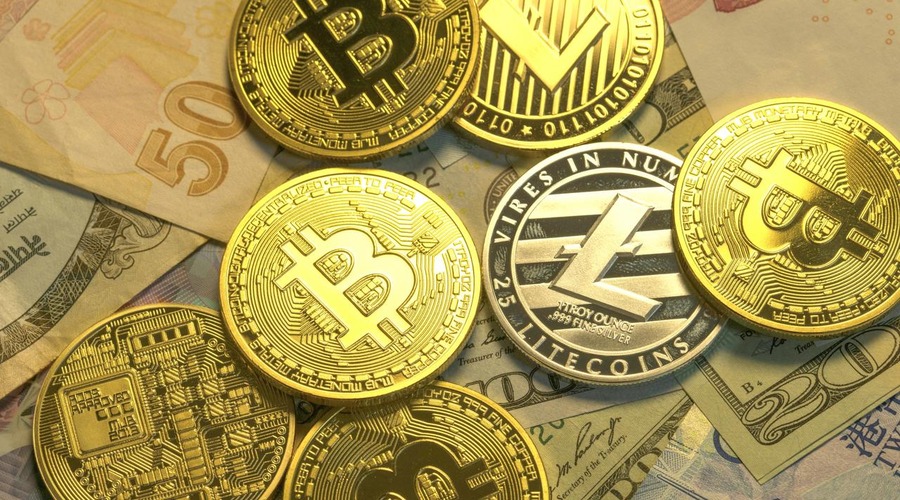Cryptocurrency Market Manipulation: Wash Trading and Spoofing

Cryptocurrency Market Manipulation: Wash Trading and Spoofing
Cryptocurrency, a decentralized form of digital currency, has gained immense popularity in recent years. As the market continues to evolve and expand, so do the tactics used some individuals to manipulate it. In this article, we will explore two common techniques employed for market manipulation: wash trading and spoofing. We will delve into their definitions, impact on the cryptocurrency market, and potential measures to mitigate these fraudulent practices.
Introduction
Cryptocurrency has revolutionized the financial landscape, providing individuals with decentralized and secure means of transactions. However, alongside its rapid growth, the cryptocurrency market has also become a target for various forms of manipulation. Two prominent techniques are wash trading and spoofing, which can distort market activity and deceive investors.
Understanding Market Manipulation
Market manipulation refers to activities that artificially influence the supply, demand, or price of an asset. It involves intentional actions to create false perceptions and exploit market participants for personal gain. Wash trading and spoofing are two prevalent forms of market manipulation in the cryptocurrency industry.
Wash Trading
Wash trading occurs when a trader simultaneously buys and sells the same cryptocurrency, creating the illusion of increased trading volume and activity. This deceptive practice gives a false impression of market demand and liquidity.
The Mechanics of Wash Trading
In wash trading, an individual or entity places both buy and sell orders for a cryptocurrency they own, resulting in no real change in ownership. Automated bots are often employed to execute these transactions rapidly. As a result, the trading volume appears inflated, attracting unsuspecting traders and investors.
Impact of Wash Trading on the Cryptocurrency Market
Wash trading can have detrimental effects on the cryptocurrency market. Firstly, it misrepresents the liquidity and trading activity of a cryptocurrency, misleading investors and potentially causing them to make uninformed decisions. Moreover, it can artificially inflate the price of a cryptocurrency, creating a false sense of market demand.
Detecting and Preventing Wash Trading
Detecting wash trading can be challenging due to the sophisticated techniques employed. However, exchanges and regulatory bodies are implementing measures to combat this fraudulent practice. Advanced algorithms, pattern recognition, and cross-exchange collaboration are being utilized to identify suspicious trading patterns and flag potential wash traders.

Spoofing
Spoofing involves placing large buy or sell orders with the intention of canceling them before execution. This manipulation technique aims to deceive other market participants creating false market signals and influencing the price of a cryptocurrency.
How Spoofing Works
Spoofers place substantial orders to create the illusion of significant market interest in a particular cryptocurrency. These orders are then canceled, leading to a temporary price shift. The spoofer takes advantage of this price movement to execute trades at more favorable prices.
Consequences of Spoofing in the Cryptocurrency Market
Spoofing can have severe repercussions for the cryptocurrency market. It disrupts the natural price discovery process, leading to increased volatility and potential losses for unsuspecting traders. Spoofing also undermines market integrity and investor confidence, hampering the growth and stability of the cryptocurrency market.
- Price Manipulation: Spoofing can lead to artificial price movements in the cryptocurrency market. By placing large buy or sell orders and subsequently canceling them, spoofers create false market signals that can deceive other market participants and influence the price of cryptocurrencies.
- Increased Volatility: Spoofing contributes to increased market volatility. The temporary price shifts resulting from canceled spoofing orders can trigger panic selling or buying, causing rapid price fluctuations. This volatility can make it challenging for investors to make informed decisions and can lead to potential losses.
- Market Disruption: Spoofing disrupts the natural price discovery process in the cryptocurrency market. By creating false market interest, spoofers distort supply and demand dynamics, making it difficult for genuine traders and investors to accurately assess market conditions and trade effectively.
- Loss of Investor Confidence: The prevalence of spoofing erodes investor confidence in the cryptocurrency market. When traders and investors become aware of manipulation attempts, they may hesitate to participate, fearing unfair practices and potential losses. This lack of confidence hampers market growth and stability.
- Market Integrity Concerns: Spoofing undermines the integrity of the cryptocurrency market. It creates a perception of market activity and interest that is not based on genuine demand. This lack of transparency and trust can deter new participants from entering the market and contribute to a negative reputation for cryptocurrencies as a whole.
- Regulatory Scrutiny: The consequences of spoofing have attracted regulatory attention. Regulatory bodies are implementing stricter measures to combat market manipulation, including spoofing. This increased scrutiny can lead to penalties, fines, and legal consequences for individuals or entities engaged in spoofing activities.
- Negative Impact on Liquidity: Spoofing can have a negative impact on market liquidity. When spoofing creates false impressions of liquidity, it can mislead traders and investors into believing there is more market activity than there actually is. This can result in illiquid markets and difficulties in executing trades at fair prices.
- Reputational Damage: Spoofing tarnishes the reputation of the cryptocurrency market. Instances of market manipulation, including spoofing, can create negative perceptions of cryptocurrencies, deterring mainstream adoption and potential institutional investment.
- Erosion of Fairness and Transparency: Spoofing undermines the principles of fairness and transparency in the cryptocurrency market. It distorts market signals, misleads participants, and creates an uneven playing field. This erosion of fairness and transparency hinders the establishment of a healthy and sustainable market ecosystem.
- Need for Stronger Countermeasures: The consequences of spoofing highlight the need for stronger countermeasures and regulatory frameworks to combat market manipulation effectively. Enhanced surveillance systems, improved reporting requirements, and collaboration between exchanges and regulatory bodies are crucial in addressing the challenges posed spoofing in the cryptocurrency market.
Detecting and Combating Spoofing
Detecting spoofing requires sophisticated surveillance systems capable of monitoring trading activity across multiple exchanges. By analyzing order book data, trading algorithms can identify suspicious patterns and distinguish genuine market interest from spoofing attempts. Regulatory bodies are actively working with exchanges to implement stricter regulations and surveillance mechanisms.
Regulatory Measures Against Market Manipulation
To combat market manipulation in the cryptocurrency industry, regulatory bodies are adopting stricter measures. Enhanced reporting requirements, increased transparency, and stricter enforcement of existing regulations are being implemented to deter fraudulent activities. Collaboration between regulators, exchanges, and industry participants is crucial to ensure market integrity.
- Stricter Reporting Requirements: Regulatory bodies enforce stricter reporting requirements for cryptocurrency exchanges and market participants. These requirements aim to increase transparency and provide regulators with the necessary data to identify and investigate potential instances of market manipulation.
- Enhanced Surveillance Systems: Regulatory bodies collaborate with exchanges to develop and implement advanced surveillance systems. These systems utilize sophisticated algorithms and data analysis techniques to monitor trading activity, detect suspicious patterns, and identify potential cases of market manipulation, including wash trading and spoofing.
- Increased Cross-Exchange Collaboration: Regulatory bodies encourage and facilitate cross-exchange collaboration to share information and coordinate efforts in combating market manipulation. By exchanging data and insights, exchanges can collectively identify and take action against manipulative activities that may span multiple platforms.
- Stricter Enforcement of Existing Regulations: Regulatory bodies are taking a more proactive approach to enforce existing regulations related to market manipulation in the cryptocurrency industry. This includes conducting thorough investigations, imposing penalties, and pursuing legal action against individuals or entities found guilty of engaging in fraudulent practices.
- Education and Awareness Campaigns: Regulatory bodies undertake educational initiatives to raise awareness among market participants about the risks associated with market manipulation and the importance of reporting suspicious activities. By providing guidance and resources, regulators aim to empower individuals to detect and report instances of manipulation.
- Market Surveillance and Whistleblower Programs: Regulatory bodies establish market surveillance programs to proactively monitor trading activities, analyze data, and identify potential manipulative behavior. Additionally, whistleblower programs are implemented to incentivize individuals with inside knowledge of manipulative activities to come forward and report such practices confidentially.
- International Cooperation: Regulatory bodies collaborate with international counterparts to address market manipulation that may transcend national borders. This cooperation includes sharing information, harmonizing regulatory approaches, and coordinating enforcement efforts to effectively combat manipulative activities in the global cryptocurrency market.
- Periodic Audits and Inspections: Regulatory bodies conduct periodic audits and inspections of cryptocurrency exchanges and other market participants to ensure compliance with regulations and detect any potential irregularities or signs of market manipulation. These audits serve as a proactive measure to maintain market integrity and protect investors.
- Prohibition of Insider Trading: Regulatory bodies enforce strict prohibitions against insider trading in the cryptocurrency market. This includes prohibiting individuals with privileged information from engaging in trading activities that exploit their knowledge for personal gain, ensuring a level playing field for all market participants.
- Continuous Monitoring and Adaptation: Regulatory bodies recognize the evolving nature of market manipulation techniques and continually adapt their strategies to address new and emerging threats. Ongoing monitoring and assessment of the regulatory landscape enable regulators to stay ahead of manipulative practices and implement necessary adjustments to regulations and enforcement approaches.
By implementing these regulatory measures, authorities aim to foster a fair, transparent, and trustworthy cryptocurrency market, deterring market manipulation and protecting investors’ interests.
Future Outlook and Challenges
As the cryptocurrency market continues to grow and mature, addressing market manipulation remains a significant challenge. Rapid technological advancements and evolving tactics used manipulators require ongoing vigilance and adaptability. Continuous collaboration among stakeholders, robust regulatory frameworks, and innovative surveillance technologies will be essential in mitigating market manipulation.
Conclusion
Wash trading and spoofing are detrimental practices that can disrupt the cryptocurrency market and harm investors. The deceptive nature of these tactics undermines market integrity and creates false perceptions. However, with the concerted efforts of exchanges, regulatory bodies, and technological advancements, it is possible to detect and prevent such manipulative activities, fostering a fair and transparent cryptocurrency ecosystem.
FAQs
Q1: How can wash trading affect the value of cryptocurrencies? Wash trading can artificially inflate trading volume and create a false sense of demand, leading to misleading price movements and potentially influencing the value of cryptocurrencies.
Q2: Are there any penalties for individuals or entities caught engaging in market manipulation? Yes, market manipulation is illegal in many jurisdictions, and individuals or entities found guilty of such activities can face significant fines, legal consequences, and reputational damage.
Q3: Can exchanges detect and prevent spoofing effectively? Exchanges are actively working to enhance their surveillance systems to detect and prevent spoofing. However, due to the complex nature of spoofing, continuous improvement and collaboration with regulatory bodies are necessary.
Q4: What role do regulatory bodies play in combating market manipulation? Regulatory bodies establish and enforce rules and regulations to deter market manipulation. They work closely with exchanges and industry participants to ensure compliance and maintain market integrity.
Q5: How can investors protect themselves from falling victim to market manipulation? Investors can stay informed about market trends, conduct thorough research, and choose reputable exchanges. Additionally, they should be cautious of unusually high trading volumes and price fluctuations that may indicate potential manipulation.
I’ve been involved with cryptocurrency for three years. I have been a vocal advocate for the people and an active part of the community. I am well-known for my book “Crypto Revolution: An Insider’s Guide to the Future of Money” and blog “The Crypto Chronicles.” In addition, I frequently contribute to CoinDesk, one of the top news websites for cryptocurrencies. I write as well as invest actively in a number of bitcoin initiatives.
